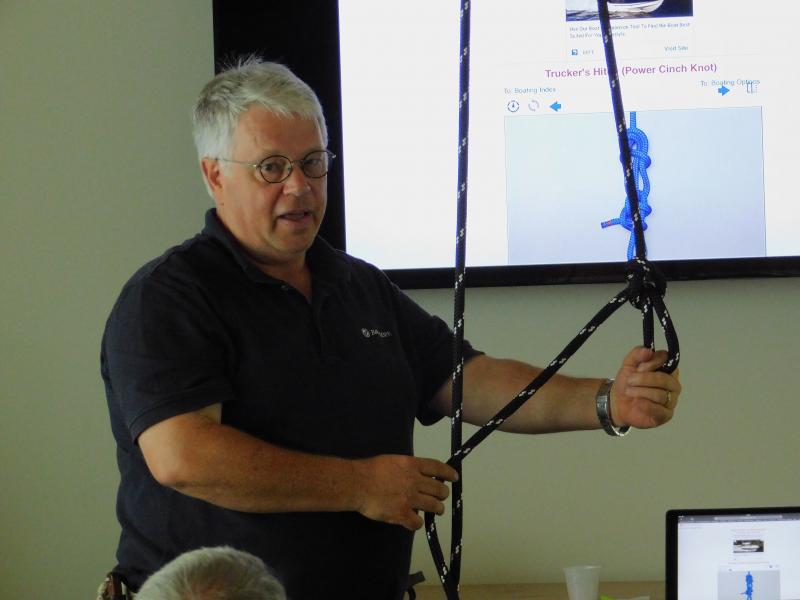Knot at the end of their rope: Group learns knots at DNRT
A group of budding knot enthusiasts got tied up in the art form at a special Dartmouth Natural Resources Trust workshop on August 9.
The workshop was taught by Captain Robert C. Glover III, also known as Captain Bob. Glover works at R&W Rope in New Bedford, and owns DeadEye Maritime Services, which trains recreational boaters.
DNRT Land Manager Linda Vanderveer said she had the idea for the workshop when she went to R&W Rope to pick up some rope. She uses rope and knots frequently in her work at the trust, but wanted stronger knot skills.
Glover was recommended to teach the class because he has educated sailors for years on the topic.
Once announced, the workshop filled up within six hours.
Glover taught the knot enthusiasts many multi-purpose knots: locking hitch, timber hitch, bowline, French bowline, slip bowline, clove hitch with two half hitches, trucker’s hitch, and a rolling hitch. He also explained the uses of the various knots, many of which are very versatile.
For example, a French bowline is perfect for lifting someone out of the water as it has two loops, one of which could loop under the person’s arms, and one which could loop around the back of their legs.
The timber hitch, appropriately, is perfect for dragging logs and trees as it relies on friction, but is easily released.
He began the workshop by talking about the history of rope, which has changed dramatically in the last 50 years. By way of example, he said that when he began working in towing in the Pacific Northwest in 1984, the tugboat usually used nylon double braid rope that was 10 inches in diameter.
Now, to pull the same amount of weight, tugboats use a two-inch Dyneema rope that is twice as strong. He also said that rope has become much more specialized to various tasks: Rope for sailing is different from that used by arborists, which is different than which is used in the theater.
“When people come in and say, ‘I need rope for my boat,’ I need to ask about 15 questions before I can get them fitted with a rope,” Glover said.
For those who are interested in knot tying, Glover recommends the many apps and websites that explain various knots. In particular, he uses the Grog Knots app and www.animatedknots.com, both of which are free resources for aspiring knot experts.














